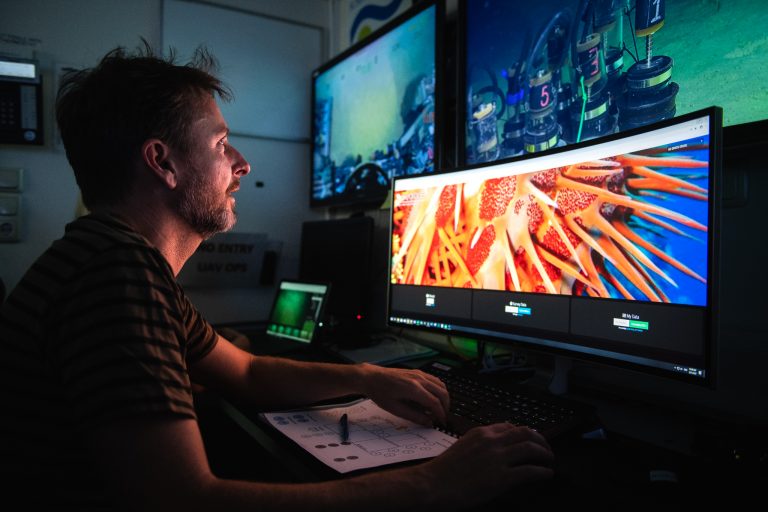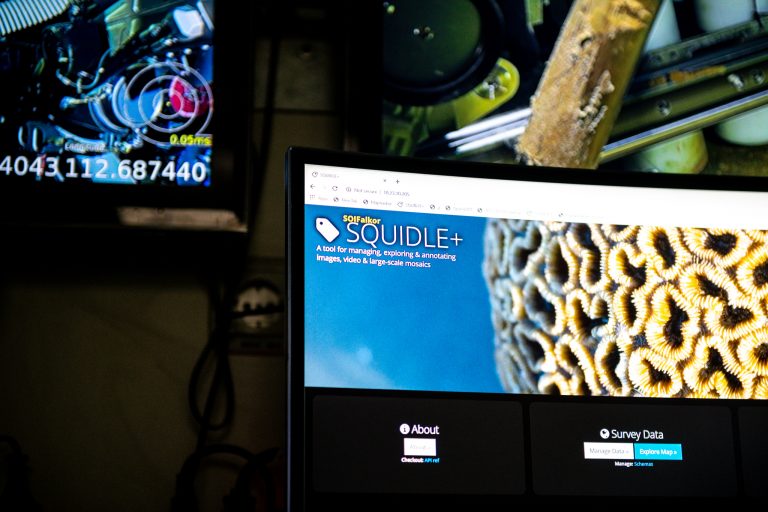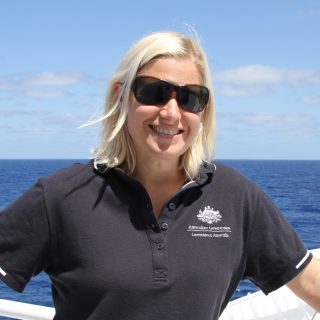Those watching the livestreams from our ROV may notice that parts of our dive appear to be a bit, well, boring. We seem to flying right over some of the cool stuff, rarely pausing or zooming in to have a closer look.
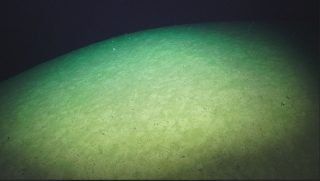
This is all intentional, and there is good reason behind it. For each of our dive sites, we have earmarked 500 m transects to be quantitatively analysed for imagery. These transects are designed to keep consistent methods among all of our dive sites. We can then be confident that any differences or similarities we see among sites and canyons are actually real and not just due to differences in the camera operation. We are essentially making sure that we are comparing apples with apples!
Another benefit of having a straight transect is that we can classify habitats and mark areas of transition. Rocks, boulders, and other hard substrata in the deep-sea are premium real estate for many organism. If we use our image transects to identify these areas, this can help ground truth the geophysical data (bathymetry and backscatter) that we are collecting. Eventually, such information could lead to predictions and extrapolations for the entire canyon or region.
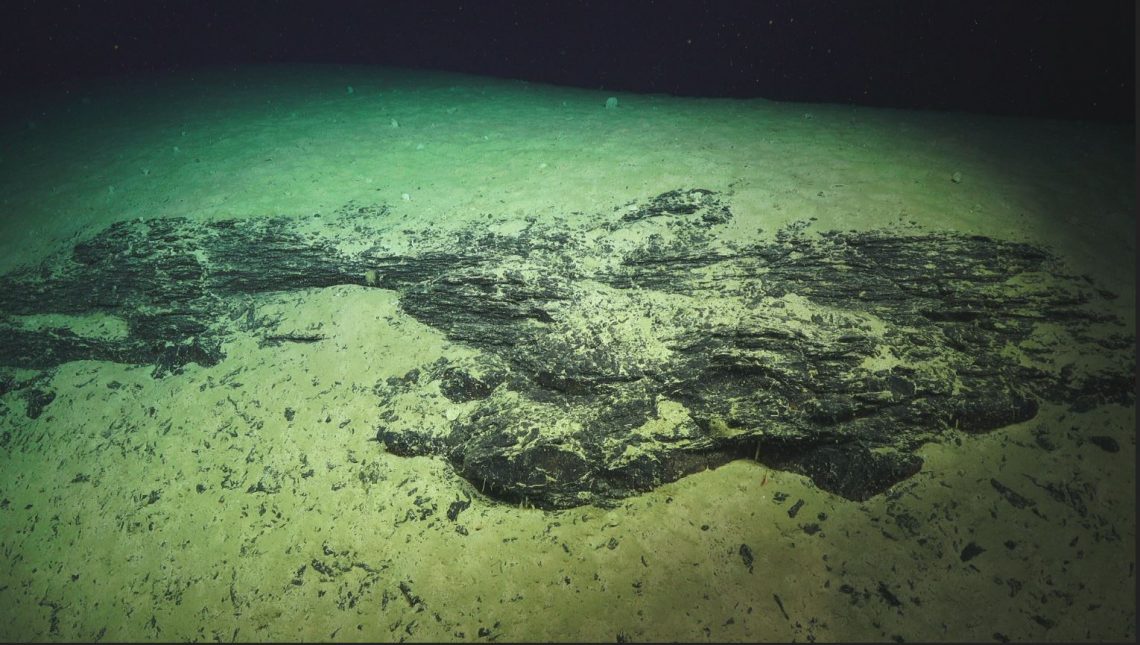
The images from these transects are being annotated onboard using a national classification scheme called CATAMI. After the survey is done, we will use a range of geospatial and statistical techniques on this data to look for patterns within and between the canyons. This helps us to explore the relationships between biological communities and canyon slope, substrate, and rugosity.
To our knowledge, this is the first time in Australia that quantitative image analysis from a deep-sea ROV has been undertaken. Results from this will help our marine park managers better understand how canyon environments affect the habitats and biological communities within them, particularly within the Gascoyne Marine Park.
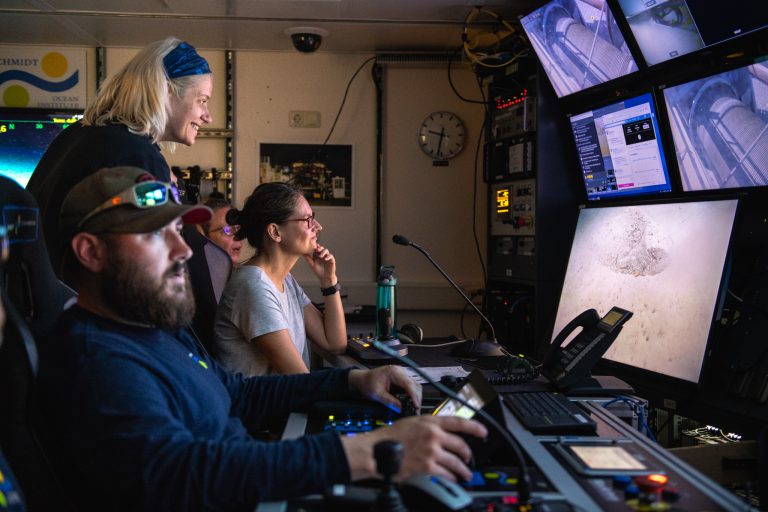
Ultimately, these transects are well worth chunks of time watching serene mudscapes pass by! But rest assured, if we see something interesting and new, we will pause our transect, zoom in, and possibly attempt a collection. We most certainly want indulge everyone’s curiosity (including ours) to have a proper exploration of the amazing biodiversity in these deep-sea canyons!
